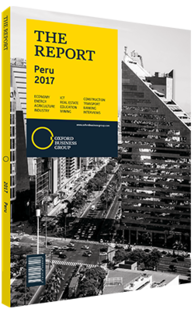Alfredo Pérez, General Manager, Alicorp: Interview

Interview: Alfredo Pérez
How are consumer patterns evolving in light of social and economic development?
ALFREDO PÉREZ: The amount of information available to consumers today is greater than ever before. This gives consumers more leverage and power to decide what to purchase, especially when it comes to basic food items. As a result, shoppers are paying more attention to the ingredients, changing trends and creating new ones. For instance, healthy food has been growing in popularity, and trends are now based on customer preference rather than being imposed. Research and development has become essential in understanding the market and responding to preferences. What customers and suppliers both seek is value. It may be value based on quality or on price, but it is here that companies operating for mass consumption should seek to meet customer expectations.
In what ways are distribution channels changing, and what role can technology play?
PÉREZ: Retailers have experienced significant double-digit growth over the last year, especially in Lima and the main secondary cities of Peru, where there is a greater concentration of people and therefore purchasing power. The challenge now is to achieve comparable growth in smaller cities and areas of the country with a lower population density. The key to achieving this goal is adapting available business models to better meet the reality in these areas. Additionally, from a logistics point of view, these areas pose a challenge, due to their distance from production centres.
Technology is a powerful tool that can be used in modern channels – such as supermarkets – by simplifying the process of acquiring items both for the consumer and the supplier, as well as by streamlining logistics. Technology will continue to play a more relevant role in mass consumption in coming years, as it allows producers to improve communications with the buyer. It creates direct links between the brand and the buyer and allows the company to predict consumer behaviour and better engage customers.
How much of the growth in demand for “white label” products is caused by economic uncertainty?
PÉREZ: In more developed markets, the presence of white labels has been increasing over the years. In Peru, rising penetration of rebranded products in the domestic market has been associated with the decrease in purchasing power as a result of the slowdown in the country’s economy. However, the growth of white labels can also be explained by the expansion of retail channels in previous years. It is in their interest to offer white label products, as it generates direct profit for them. However, it is important to recognise that retail stores represent a very low percentage of the total market, and the average Peruvian still prefers to buy products through traditional channels, like local shops and markets. In light of a less buoyant economy, some consumers are prioritising product price over quality.
How can manufacturers sustain production levels given lower consumption and rising prices?
PÉREZ: The current consumption dynamic in Peru is challenging. Significant GDP growth between 2003 and 2013 created thousands of jobs that enhanced average purchasing power, strengthened the middle class and increased consumption levels. Furthermore, the buoyant economy increased access to financing, which further benefited consumption. Since 2013 prices for mass-produced items have been increasing, and the country’s GDP growth has fallen. As the market shrinks or reaches a natural plateau, the best way to compete and grow is to invest in innovation. Consumption levels are expected to rise in the second semester of 2017, eventually reaching levels seen prior to the 2013 slowdown. Once sectors that generate indirect demand start creating new jobs, demand for goods will be stimulated and purchasing power enhanced.
You have reached the limit of premium articles you can view for free.
Choose from the options below to purchase print or digital editions of our Reports. You can also purchase a website subscription giving you unlimited access to all of our Reports online for 12 months.
If you have already purchased this Report or have a website subscription, please login to continue.

